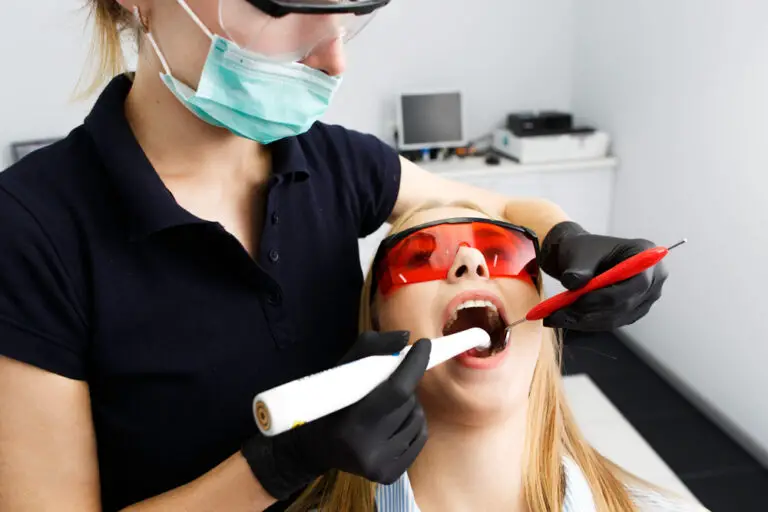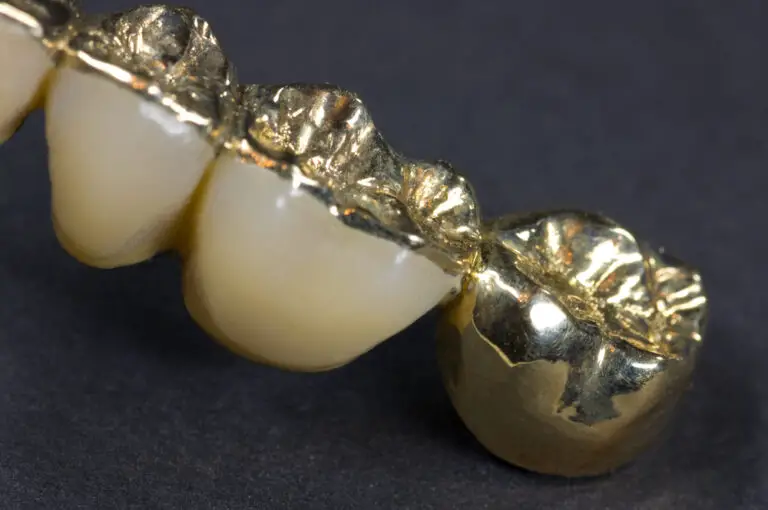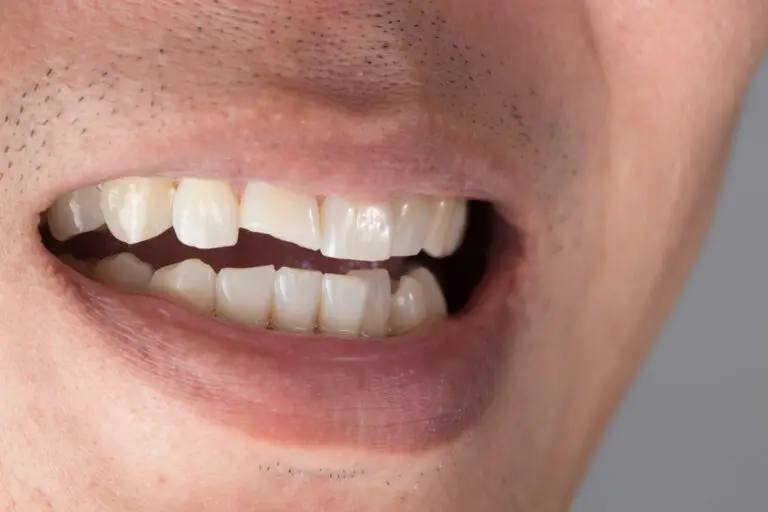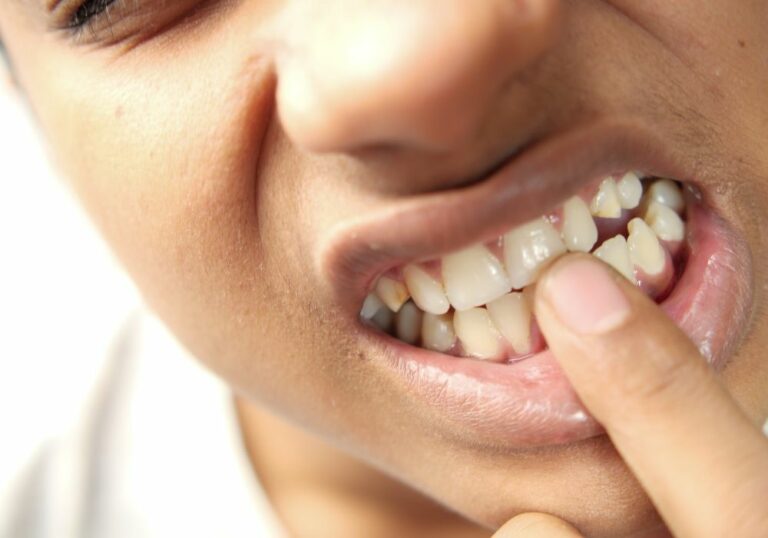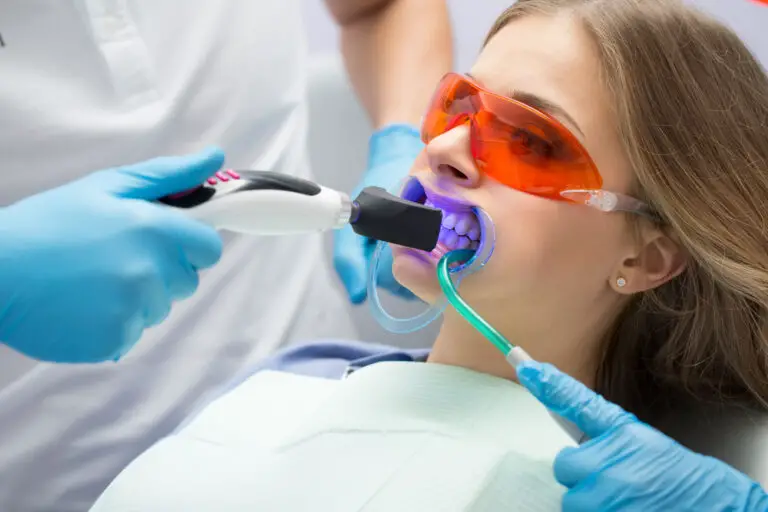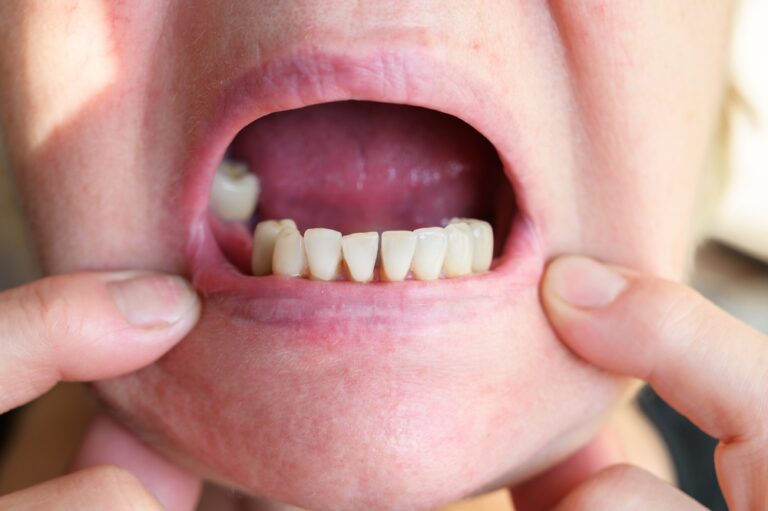What is Orthodontic Tooth Movement?
Orthodontic tooth movement is the process of repositioning teeth into improved alignment using appliances like braces or Invisalign. Through the application of controlled forces, orthodontists are able to manipuate teeth into straighter, healthier positions. This allows for the correction of various malocclusions and creates a more balanced, functional bite.
One of the most common forms of orthodontic tooth movement is pushing (or proclining) teeth forward. This movement is utilized to alleviate crowding, reduce overjet, improve the bite, and enhance the esthetics of the smile. When done properly, pushing teeth forward can greatly transform dental appearance and occlusion.
Orthodontic movement relies on the biologic response of the teeth and bone to sustained force. When pressure is applied to the crown of the tooth, the periodontal ligament and bone tissue are compressed. This triggers bone remodeling, causing the socket walls to effectively dissolve on the pressure side and rebuild on the tension side as the teeth move.
New bone is continually deposited by the body to reinforce the areas under tension. Simultaneously, osteoclasts work to break down bone on the compressed side as the teeth are pushed forward. This synchronized cycle allows for gradual tooth movement through the bone as desired.
The speed of tooth movement is dependent on factors like the amount of force applied, bone density, and tooth root shape. Orthodontists must carefully control the forces to move teeth at an optimal pace in order to avoid damage to the roots or supporting structures.
Indications for Proclining Teeth
There are several situations where proclining or pushing teeth forward can be beneficial:
Alleviating Crowding
One of the main uses of proclining teeth is to create space and alleviate crowding, particularly in the anterior segment. Pushing the incisors forward allows more room for the alignment of overly crowded front teeth. This can eliminate the need for extractions in borderline cases with mild-to-moderate crowding.
Careful interproximal reduction and dental expansion may be used as adjuncts to provide the extra space needed for proper proclination. However, there are limits to how far teeth can safely be pushed forward without causing other issues.
Correcting Increased Overjet
Increased overjet refers to upper front teeth that stick out too far beyond the lower teeth. This can occur due to skeletal discrepancy, a tapered arch form, or retroclined lower incisors.
Proclining the upper incisors helps reduce excessive overjet and can improve the bite relationship. But stability requires correcting the underlying cause of the excessive overjet as well.
Management of Anterior Open Bite
An anterior open bite, or lack of vertical overlap between the upper and lower front teeth, can also be addressed by proclining teeth. Pushing the upper incisors forward essentially extrudes the teeth, helping close open bite problems.
This is commonly done in children using upper removable appliances or functional appliances like headgear or reverse pull facemasks. Growth modification enhances the effects while proclining the upper incisors.
Camouflage of Skeletal Issues
In mild to moderate skeletal misalignments, teeth can sometimes be proclined to “camouflage” jaw discrepancies. This means compensating with dental movements rather than orthognathic surgery.
For instance, protruding upper incisors can help mask a mild Class III underbite. But there are limits to how much the teeth alone can compensate for larger skeletal problems.
Profile and Smile Improvements
In some patients, proclining teeth can also help reduce lip protrusion and improve the profile. Flared incisors are brought forward while retracting protrusive lips. This can enhance a patient’s smile and facial esthetics.
However, the upper lip must be short enough to avoid excessive gingival display when smiling. Careful planning using cephalometric analysis helps prevent unattractive outcomes.
Primary Methods for Proclining Teeth
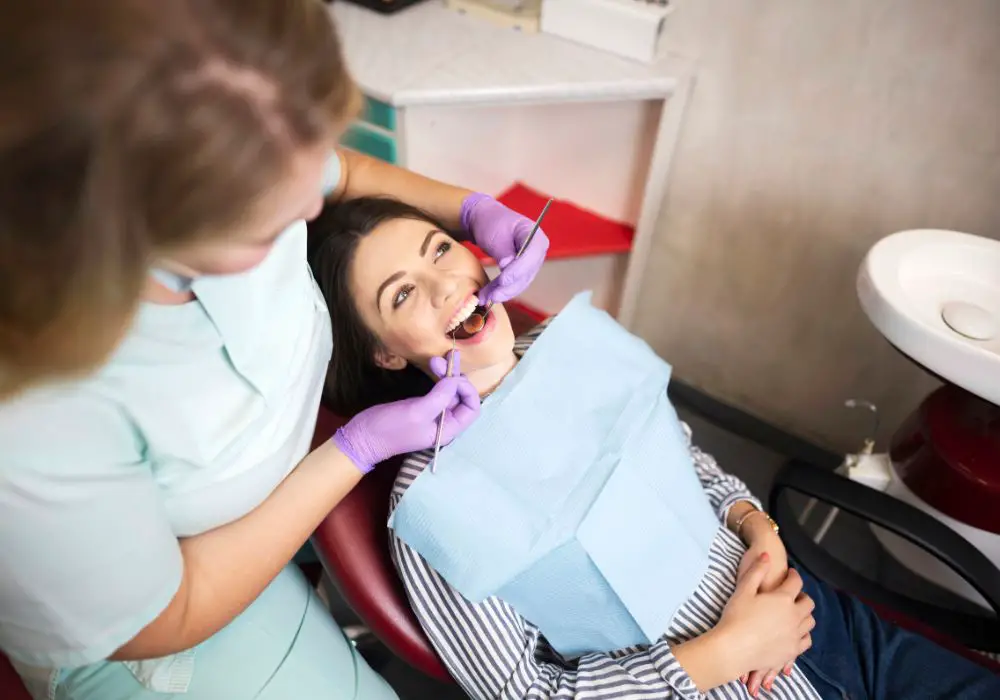
Orthodontists utilize various appliances and techniques to push teeth forward:
Fixed Orthodontic Braces
Traditional fixed braces remain the gold standard for enabling controlled tooth movement. Brackets are bonded to each tooth and connected by a wire that applies light forces over time.
Various archwire shapes, bends, auxiliaries like coils and elastics, and proper bracket positioning allow teeth to be proclined as desired. Braces provide the most precise control during anterior tooth movement.
Invisalign Clear Aligners
Invisalign is an increasingly popular choice for adults seeking discreet orthodontic treatment. These clear, removable plastic aligners are worn for 1-2 weeks each, with new aligners gradually moving teeth forward.
Attachments bonded to certain teeth provide leverage to help procline them. Invisalign can procline teeth up to 1 mm per aligner for a total of 4-6 mm overall. More significant movement requires fixed braces.
Headgear and Facemask Appliances
Removable headgear appliances utilize extraoral anchorage to the back of the head or neck to provide force capable of pushing the entire upper jaw and teeth forward.
This technique is most effective in growing patients ages 8-12. Facemasks attach to the cheeks and teeth to procline upper incisors. Each works to modify jaw growth and open bite.
Palatal Expanders
Rapid palatal expansion appliances can widen the upper arch, allowing crowded teeth to be proclined into the new space with alignment. This is often used pretreatment in teenagers to aid proclination.
Expanders are fixed to the molars and opened gradually to spread the palatal suture and expand the maxillary arch, providing room for anterior teeth.
Dental Implants for Anchorage
Temporary anchorage devices (TADs) like mini-screws or plates can be used as fixed anchorage points to procline teeth against. This provides maximum control and efficiency during anterior tooth movement, without unwanted reciprocal effects.
TADs allow difficult teeth to be pushed forward more predictably without dependence on patient compliance. They are especially useful in adults.
Limitations and Considerations
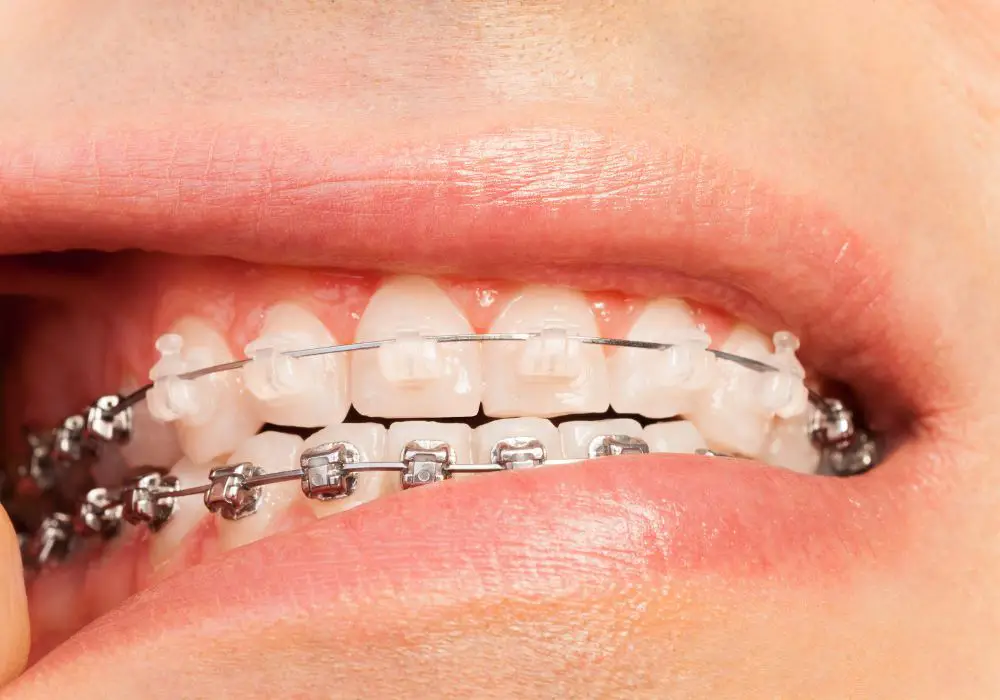
While proclining teeth offers many benefits, there are some important limitations and risks to consider:
Root Resorption Risk
Significant proclination can lead to shortening or blunting of the tooth roots. Excessive pressure on the periodontal ligament crushes and destroys root structure. This may negatively impact tooth longevity.
Narrow, pointed tooth roots are most susceptible. Panoramic x-rays help evaluate root shape and condition both before and during treatment. Shortened roots may require crowns or veneers to restore strength after braces.
Alveolar Bone Envelope
The alveolar bone forms an envelope which limits how far teeth can safely be moved. Pushing teeth outside this envelope can dehisce bone and cause gum recession.
While some bone apposition occurs with proclination, the net effect is frequently bone loss as teeth move beyond the existing alveolus. This may expose root surfaces.
Post-Treatment Relapse
Newly aligned teeth have a strong tendency to relapse back towards their original positions once braces are removed. Consistent retainer wear is imperative to prevent this.
But some relapse is still common, especially in cases with significant proclination. Additional fixed retention or alignment touch-ups may be needed for stability.
Impact on Facial Esthetics
Excess forward movement of incisors can disrupt facial proportions, creating a protrusive dental appearance. The upper lip may not drape naturally over extremely proclined teeth.
Over-proclination can also reveal a gummy smile due to excessive gingival display. Esthetic impacts must be carefully evaluated before attempting maximum proclination.
Difficulty of Molar Distalization
As upper incisors are proclined forward, the opposing molars often drift forward as well. This must be controlled by distalizing the molars.
However, distalizing molars is more difficult and less predictable than proclining incisors. Special approaches may be required to counteract the mesial force on molars.
Issues in Adult Patients
Adults tend to respond more slowly to orthodontic forces and have higher risks for complications like root resorption. Their alveolar bone is denser and less adaptive to movement.
Proclining options in adults may be more limited. Short-term orthodontic treatment focused only on aligning front teeth may be recommended instead of comprehensive treatment.
Retention Methods After Treatment
Once teeth have been proclined into the desired position, they have a strong tendency to relapse back towards their original alignment once braces are removed. Excellent long-term retention is imperative to prevent this. Common options include:
Fixed Lingual Retainers
Fixed retainers are thin wire bonds placed inconspicuously on the tongue-side of the 6 front teeth. This keeps teeth locked in position, preventing individual tooth movement. Fixed retention may be needed for 5+ years after braces.
Removable Retainers
Custom made removable plastic and wire retainers should be worn at night long-term to prevent overall arch relapse. Most patients must commit to wearing retainers indefinitely or risk teeth moving.
Lingual Braces
Placing fixed braces on the inside surface of teeth for 4-6 months after treatment can also serve as retention. This may be done in cases with significant proclination for enhanced stability.
Regular Dental Visits
Ongoing follow-up appointments every 4-6 months allows an orthodontist to monitor retention and make sure teeth remain stable. Additional retention options can be implemented if any shifting occurs.
With proper retention methods, successfully maintained results can be achieved even after significant proclination. Patients should be prepared to commit to lifetime retention.
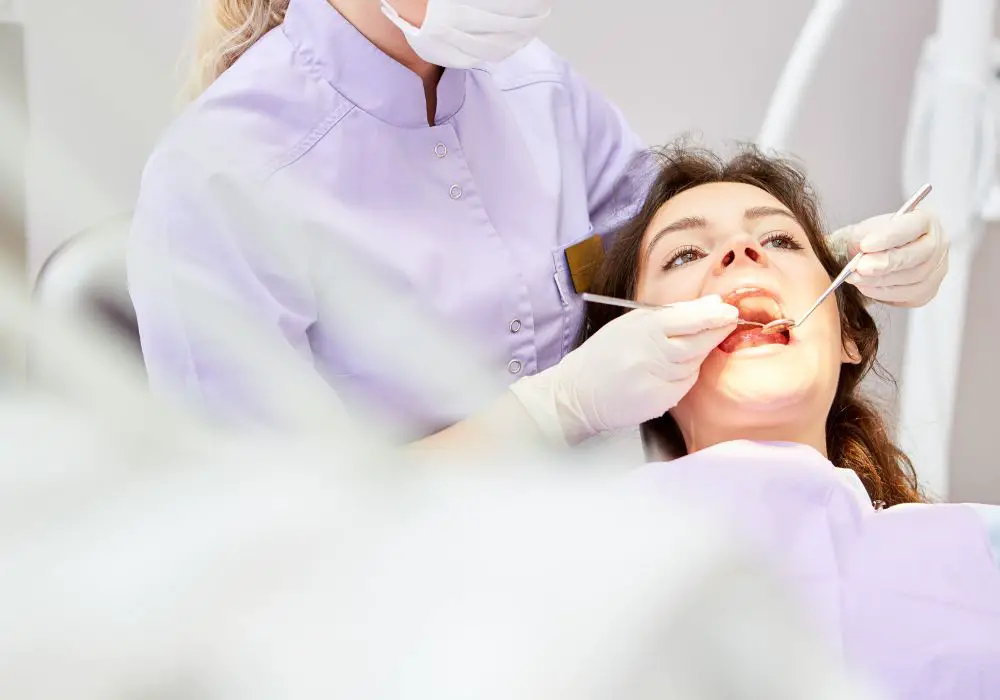
Conclusion
When performed carefully, pushing teeth forward can provide an effective way to alleviate crowding, correct overjet, close open bites, enhance the smile, and improve overall dental alignment. Both teens and adults can benefit from proclination.
However, careful diagnosis and treatment planning are imperative to determine how far teeth can safely and esthetically be moved forward. Proper force systems and retention are key to successful outcomes.
While some risks such as root resorption are inherent, focusing treatment in younger patients, monitoring progress with x-rays, and long-term retention can help minimize complications. When done appropriately under an orthodontist’s care, proclining teeth can greatly transform dental appearance and function.
FAQ
Here are answers to some frequently asked questions patients may have about proclining their teeth:
How long does it take to see results when proclining teeth?
Most patients begin to see subtle changes in tooth positions within the first 2-4 months of braces or aligner treatment. Significant improvements in crowding and overjet are visible by 6 months. Full correction requires 12-24 months in most cases.
Can proclined teeth ever go back to their original position?
Yes, without diligent retention, teeth often revert back towards their former positions. This relapse tendency is why fixed and removable retainers are required long-term following treatment involving significant proclination.
Is proclining teeth painful?
Patients may experience mild discomfort for 2-3 days after braces are activated or new aligners placed as teeth begin moving forward. Any pain is usually manageable with over-the-counter pain relievers. Discomfort decreases as treatment progresses.
Can I have my teeth proclined if I had braces as a teenager?
In some cases, yes. If crowding, overjet, or other issues reoccur after adolescent braces, an orthodontist can evaluate whether additional proclination may be worthwhile to correct them. Adult treatment plans must factor in prior orthodontic history.
How do I know if I’m a good candidate for proclining teeth?
The best candidates have healthy teeth and bone, mild-to-moderate crowding/overjet, short blunted roots, and reasonable goals for improving their smile. Proclining works best for younger teens but can often succeed in adults as well under the right conditions. Set up a consult.

